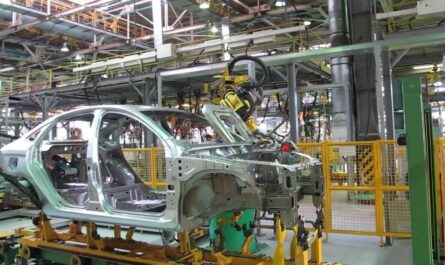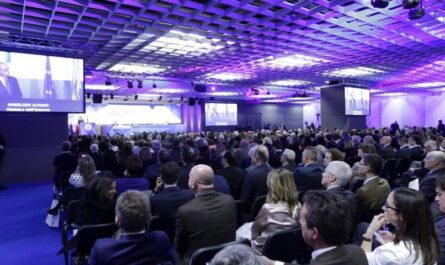 Building smart systems that can understand the world in a way similar to humans is one of the biggest goals of modern technology. Humans use a combination of their five senses – sight, hearing, touch, smell and taste – to perceive and make sense of their surroundings. Similarly, future intelligent machines will need to fuse information from multiple sensors of different modalities to achieve a deeper understanding of complex real-world environments. This integration of data from disparate sensing technologies is known as sensor fusion.
Building smart systems that can understand the world in a way similar to humans is one of the biggest goals of modern technology. Humans use a combination of their five senses – sight, hearing, touch, smell and taste – to perceive and make sense of their surroundings. Similarly, future intelligent machines will need to fuse information from multiple sensors of different modalities to achieve a deeper understanding of complex real-world environments. This integration of data from disparate sensing technologies is known as sensor fusion.
What is Sensor Fusion?
Sensor fusion refers to the process of combining sensory data or data derived from disparate sources such that the resulting information is in some sense better than would be possible when these sources were used individually. It involves concepts from probability, statistics, sensor design, and information theory. Some common examples where sensor fusion is used today include self-driving cars, robotics, surveillance and security systems, augmented reality and virtual reality devices.
Types of Sensor Fusion
There are three main categories in which sensor fusion can take place based on the processing stage at which it occurs:
– Low-level or signal level fusion: It is the earliest stage of fusion where sensor data is combined orfusedbefore feature extraction takes place. For example, multiple camera pixels can be fused into a single pixel to improve image resolution or reduce noise.
– Mid-level or feature level fusion: At this stage, features or attributes extracted from individual sensor measurements are combined. For example, combining edge detection information from image analysis with temperature measurements from an infrared camera.
– High-level or decision level fusion: It is the final stage of fusion where abstract attributes or variables, such as decisions, classifications or inferred variables, are fused together. For example, combining probability estimates from separate classifiers to arrive at a single best classification.
Algorithms for Sensor Fusion
Several statistical and machine learning algorithms can be employed for sensor fusion depending on the type of data, processing stage and application:
– Kalman Filters and Bayesian Estimation methods: Popular approaches for combining sequential estimates over time from multiple sources and handles noise in sensor measurements. Used for applications like GPS/motion sensor integration in smartphones.
– Dempster-Shafer Theory: Generalizes Bayesian theory of probability to represent degrees of belief for fuzzy or uncertain concepts. Used for fusing symbolic data from sensors or databases.
– Neural Networks: Deep learning models like convolutional neural networks are effective at automatically learning good fusion representations directly from raw sensor data. Popular for computer vision tasks involving images from different cameras.
– Evidential Reasoning: Represents uncertainty and confidence levels associated with hypotheses from disparate sources to make optimal fusion decisions. Used for threat analysis and decision-making applications.
– Fuzzy Logic: Maps sensor attributes that may be imprecise, vague or ambiguous to membership degrees for fuzzy sets. Effective at intermediate level fusion involving attributes like temperature, velocity etc.
Applications of Sensor Fusion
Self-Driving Cars
Sensor fusion plays a vital role in enabling self-driving capabilities. Cameras, radar, ultrasonic sensors and Lidar help autonomous vehicles perceive the environment. Data from these sensors is fused to detect objects, estimate depth, track moving objects and navigate safely. Sensor redundancy enhances safety whereas fusion provides a coherent understanding.
Smart Navigation Systems
Consumer devices like smartphones leverage Sensor fusion to determine location, orientation and movement accurately. Fusion of GPS, compass, accelerometer, gyroscope and camera provides robust indoor and outdoor navigation. Inertial measurements are continuously fused with signals from other sensors to overcome drift errors over time for reliable navigation.
Medical Diagnostics
Medical sensor fusion has the potential to revolutionize healthcare. Combining data from imaging modalities like MRI, CT, PET with sensors monitoring vital signs helps doctors arrive at more accurate diagnoses. Advanced patient monitoring systems fuse information from several wearable physiological sensors for remote care. Sensor fusion may assist in disease detection at an early stage.
Virtual and Augmented Reality
Immersive VR and AR experiences require fusion of multiple sensor streams for realistic simulation of environments. Data from cameras, IMUs and depth sensors gets fused to map physical spaces, track user movements precisely and overlay computer graphics seamlessly onto the real world. High quality rendition depends on effective fusion of multi-modal sensory information.
Defense and Surveillance Applications
Battlefield situational awareness depends heavily on optimal fusion of intelligence from different sources. Sensor fusion algorithms fuse data from radar, sonar, infrared imaging, signals intelligence to detect threats robustly even in adverse conditions. Video analytics and fusion of camera feeds enhances perimeter security, object tracking and incident response capabilities for civilian surveillance as well.
Conclusion
Sensor fusion has emerged as a critical technology enabling intelligent machines to perceive environments as comprehensively as human senses. As sensing and computing capabilities continue to grow exponentially, sensor fusion will play an increasingly important role in areas like autonomous vehicles, IoT, robotics, AR/VR, health informatics and more. Ongoing research on advanced algorithms, hardware optimizations and fusion architectures hold the promise of developing human-level cognition in future smart systems.
*Note:
1. Source: Coherent Market Insights, Public sources, Desk research
2. We have leveraged AI tools to mine information and compile it


